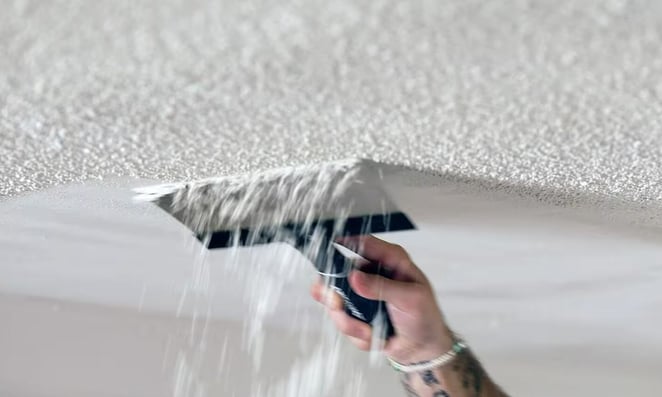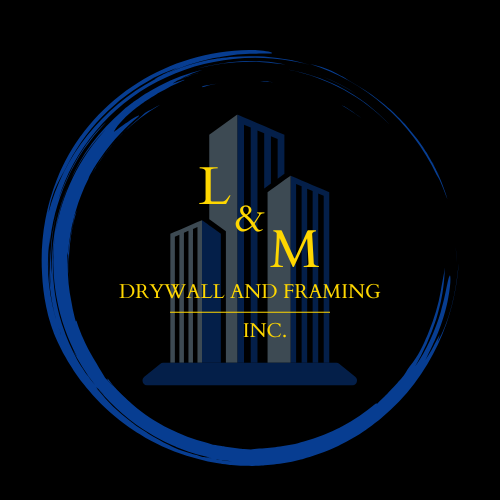CALL TODAY! → (321) 442-6490
Revamping Commercial Spaces: The Case Against Popcorn Ceilings
Still have popcorn ceilings in your space? Learn why it’s time to remove them and what comes next. Cleaner, brighter, and easier to maintain.
5/6/20254 min read


The Outdated Appeal of Popcorn Ceilings
Popcorn ceilings, characterized by their bumpy texture, enjoyed considerable popularity in commercial spaces from the 1950s until the 1980s. Originally, they were lauded for their ability to help with sound attenuation and conceal imperfections in ceiling surfaces. In an era when cost-effective building materials were a priority, this particular ceiling treatment became a staple in many offices, retail spaces, and public buildings. However, as design sensibilities evolved, the once beloved popcorn ceilings have now garnered a reputation as an outdated feature that detracts from the aesthetic value of modern interiors.
The most significant drawback of popcorn ceilings is their inherently dated appearance. The tactile surface not only seems heavy but also obstructs the seamless, clean lines that contemporary design trends emphasize. In a business environment, where first impressions are vital, the presence of an unpolished ceiling can project a sense of neglect or outdatedness to clients and customers. Such perceptions can adversely affect a company’s image, as patrons may associate the decor with a lack of attention to detail or a disinterest in providing a pleasant atmosphere.
Moreover, popcorn textures can create dim and uninviting spaces. The uneven surface scatters light rather than reflecting it, contributing to an environment that may appear darker or gloomier than intended. In contrast, current design movements emphasize brighter, smoother surfaces that maximize light distribution, thereby fostering a more welcoming atmosphere. Commercial spaces aiming to attract clientele increasingly favor ceiling finishes that are not only visually appealing but also functional in enhancing illumination. As a result, it is clear that popcorn ceilings, while once a mainstay in commercial design, have since fallen out of favor in contemporary design landscapes.
Challenges of Maintaining Popcorn Ceilings
Maintaining popcorn ceilings in commercial spaces presents several practical challenges that can impact the aesthetic and hygienic environment of a business. The textured surface of popcorn ceilings is notorious for easily trapping dust, dirt, and allergens, making regular cleaning an arduous task. Unlike flat ceilings, which can be wiped down easily, the uneven texture of popcorn ceilings can complicate maintenance efforts. This accumulation of debris not only affects the appearance of the space, but can also contribute to poorer indoor air quality, raising concerns for both employees and clients.
Another significant concern associated with popcorn ceilings, particularly in older buildings, is the potential presence of asbestos. Many popcorn ceiling textures used prior to the 1980s contain asbestos fibers, which are known to pose serious health risks when disturbed. If these ceilings are damaged or begin to deteriorate, asbestos particles can become airborne, increasing the risk of respiratory problems and illnesses associated with asbestos exposure. This more urgent health issue underscores the necessity for property owners to consider the removal of these ceilings, particularly in commercial settings where safety and compliance with health regulations are paramount.
The challenges posed by popcorn ceilings extend to their impact on the overall value and appeal of commercial spaces. As the cleanliness and safety of a business come under scrutiny, clients and customers are likely to be deterred by outdated design elements like popcorn ceilings. A less attractive space may lead to reduced foot traffic and potentially lower rental values. As perceptions of modernity and professionalism play pivotal roles in attracting customers, the presence of popcorn ceilings could contribute to the overall decline in a commercial property’s perceived value, prompting many owners to consider alternatives that enhance both aesthetic appeal and client satisfaction.
The Process of Removing Popcorn Ceilings
Removing popcorn ceilings involves a systematic approach to ensure both efficiency and safety. The process can be divided into several critical steps, starting with preparation. Firstly, business owners should clear the area beneath the ceiling of furniture and other items to protect them from dust and debris. Covering the floor with plastic sheets is advisable, as it will facilitate easy cleanup.
Next, the necessary tools and materials need to be gathered. Essential tools for this project include a putty knife, a spray bottle filled with water, a ladder, and a dust mask. A putty knife is used for scraping off the ceiling texture, while the spray bottle will help moisten the material, making it easier to remove. Safety precautions also play a pivotal role, as many popcorn ceilings installed before 1980 may contain asbestos. Therefore, conducting an asbestos test is a vital step. If asbestos is present, hiring a licensed professional for its removal is imperative to avoid health risks.
Once the area is prepared and tested, the removal can begin. Moistening the popcorn texture with water allows for easier scraping with the putty knife. This should be done carefully to avoid damage to the ceiling beneath. The task can be time-consuming, depending on the size of the area, taking anywhere from a few hours to several days. During this period, business activities may experience some disruptions, particularly if the ceiling spans public or workspaces.
In some cases, enlisting the help of professionals might streamline the process and reduce the potential for complications. Expert contractors have the experience and equipment necessary to perform the removal quickly and safely, minimizing downtime for businesses. Ultimately, thorough planning and execution can lead to a successful revamp of commercial spaces, eliminating unwanted popcorn ceilings for a fresher aesthetic.
Transforming Spaces: Alternatives to Popcorn Textures
As commercial spaces continue to evolve, the choice of ceiling texture plays a pivotal role in defining their aesthetic and functional appeal. Popcorn ceilings, once popular for their acoustic properties and ease of application, are now being sidelined in favor of more contemporary finishes that offer both visual and practical merit. A seamless or smooth ceiling finish is one of the most sought-after alternatives, lending an air of sophistication and simplicity. Such smooth surfaces enhance lighting, creating a more open and inviting atmosphere that is particularly beneficial in offices or retail environments.
For those seeking texture without the dated popcorn effect, options like knockdown or slap brush textures can provide visual interest while maintaining a modern touch. These techniques create a subtle depth and character, making them suitable for various settings from restaurants to galleries. They can be tailored to match the overall design theme of the space, ensuring harmony with other design elements.
Moreover, coffered and tray ceilings stand out as luxurious finishes that add significant architectural interest, transforming otherwise mundane areas into visually striking parts of the building. These options not only enhance the visual appeal but also can improve acoustics and create depth, giving clients and patrons a more immersive experience.
When choosing the right ceiling finish, it is essential to consider the brand image and ambiance desired for the space. A contemporary or minimalist brand may benefit from a smooth ceiling, while a more eclectic brand might opt for textured surfaces or coffered ceilings to make a statement. Embracing these updated ceiling finishes can not only elevate the aesthetic quality of a commercial space but also increase property value and attract a wider audience, contributing to the overall success of the business.
SUBSCRIBE TO OUR NEWSLETTER
CALL:
(321) 442-6490
HOURS:
Mon-Sat
9:00am-5:00pm
COPYRIGHT © 2025 L&M Drywall And Framing INC.


